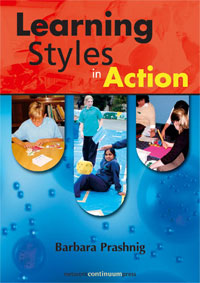Every person has his or her unique style of learning: some of us want visual props like photos and diagrams, others prefer listening to a taped lecture, others still will pace up and down the room in order to understand the new material better. Well, we are also poles apart when it comes to the way we work: some of us tackle one task at a time and keep at it until it’s finished, while others prefer working on several things at the same time.
All these different preferences are called your Learning Style. And the thing is, they can be measured by applying a Learning Style Analysis Test from Creative Learning Systems. It’s an online questionnaire and takes about 10 minutes to complete. As soon as you answer the questions, you receive a report with your own personal learning profile.
So how do you use the information contained in the profile? It’s really simple. The profile will make recommendations as to which careers may or may not be suitable for you. For example, if you can’t stand routine, your profile will say something like: “As you love change, and enjoy trying out new things, you hardly ever do the same thing the same way twice. It is important that you take into account your strong need for variety and your love of change when you consider future career planning.”
If you’re a talker who needs people interaction, the profile will guide you as follows: “For your future career planning it is very important to consider jobs which require good communication skills and a lot of people involvement.”
Sometimes the profile will list your preferences and let you decide what to do with the information, without suggesting a specific career path. Let’s imagine that your report says: “You have very strong analytical skills when it comes to problem solving or brain storming, and you always tend to use your rational, left-brain style first. When something is neither logical nor proceeding sequentially, you are not really interested.” The report does not state explicitly that you should seek careers that require strong analytic skills, but that stands to reason, doesn’t it?
Your Learning Style Analysis report will not tell you that you should become a lawyer or try to dissuade you from following your dream to be an actor. What the report will do, however, is list your strengths, your flexibilities and your non-preferences. That knowledge will be priceless when you’re considering the career with which you will begin your adult life. And the pictures in the report are kind of neat, too!
Just imagine... the career you choose now may well be the career you are stuck with for the next 50 years. You may as well go for something you enjoy and are good at, right?
Check out your Learning Style - it’s the cool thing to do.



